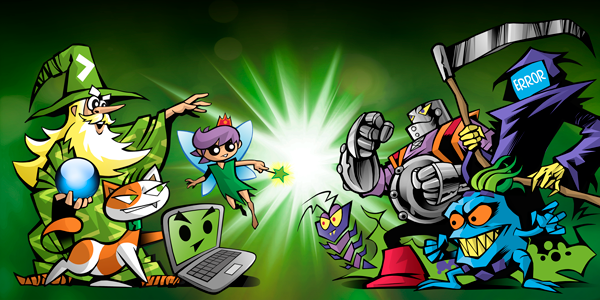Schools are closed in many countries and Codelearn has decided to close all its centres temporarily, which means that our students will have to face 100%-online education for the first time, since the Codelearn method is based on a blended learning approach. Over the next few weeks Codelearn offers the possibility to keep working from home, which has become an opportunity to try an education system that has an eye on both the academic and professional future of our students.
Elearning is an education system characterized by using technology. It can be called by different names (distance learning, online education, virtual learning…), but we are always referring to education that takes place on the Internet. Despite the fact that we mainly associate it with distance universities or MOOC courses, elearning is a training resource that offers many possibilities and which is flexible enough to find its own place among the educational resources for children and adolescents.
Computer, mobiles and tablets have been introduced into education for some time (both at school and at home) thanks to the wide variety of programs and applications developed for this purpose. However, there aren’t many online extracurricular options yet, which may seem counterintuitive considering that today’s extracurricular activities are targeting digital natives. Most distance learning is intended for adults, so today we want to highlight the advantages of elearning for kids and teens based on our experience with the Codelearn online platform:
1. The technological society and the working future of our children
We live surrounded by technology. In fact, it is so present in all areas that every day there will be more and more difference between people who know how to understand and communicate with machines and those who do not, which is why we stress the need to learn programming as soon as possible.
Education is not the only thing that has changed because of technology: work is also doing it progressively. Every day there are more people who take advantage of technology to work from home or who are digital nomads, that is, people who use new technologies to work from anywhere in the world. These are trends that will continue to grow because there will be more and more jobs related to technology and it is very likely that the future of our children will pass through many situations in which they will have to work remotely.
2. Development of children’s autonomy
Elearning is a type of learning really challenging for students and it contributes to the development of their autonomy. The fact that there is no physical classroom, with classmates sitting next to you and a teacher in front of the class, encourages students to try to work alone in the first place and find solutions to the problems they have to face. Later, they can start sending questions or doubts if they don’t find a solution.
On the other hand, distance education forces them to acquire more responsibility, since it is the students themselves who must remember the exercises they have to do. In the case of Codelearn, online students also have the support of a mentor, but we are talking about an autonomous learning in which students are the main players.
3. Student-centered learning
In this sense, there is a very clear difference with face-to-face education, which in most cases has the teacher as the central axis of education. Online education revolves around the student – it should be noted that he access to the platform for his own interest in learning, and it is the student himself who progresses in his learning thanks to the content he can found there.
In the case of the Codelearn online extracurricular activity, students progress at their own pace according to their motivation and their ability to assimilate new knowledge. They always have the support of a mentor, but this mentor is just a figure that helps and accompanies the student in his learning.
4. A progressive and personalized learning
There are no two identical elearning platforms. However, online learning platforms generally provide the possibility of ensuring individual follow-up of students, since each student follows the content progressively and asks specific doubts as he progresses in his learning process.
5. Teamwork skills
Regarding the previous point, it should be noted that elearning does not always have to be an individual activity. In many occasions it is a good tool to develop teamwork, since it requires good communication between people who are in different places and who have to work on the same project.
In the case of the Codelearn after-school activity, the platform offers the possibility of participating in team competitions such as Codeathlon, the programming and robotics league of Codelearn. Thanks to these initiatives, students from different points of the map can get in touch and work as a team with a common goal, a skill that will be highly valued by companies in their future.
6. Flexibility
Finally, we want to highlight the flexibility offered by elearning, which allows students to get connected and start learning to code at any time and from anywhere: all they need to have is an Internet connection.
In the case of online extracurricular activities, this allows students to organize themselves better, but it also means greater freedom for parents, who in this case do not have to invest time in travelling to the centre at a specific time.

